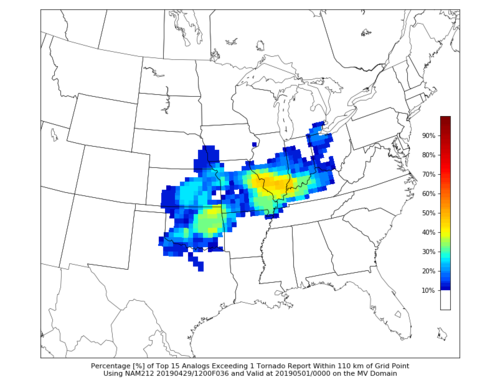Growing more and more concerned about a few supercells/tornadoes in the vicinity of the warm front across parts of eastern Missouri into west/central Illinois on Tuesday afternoon and evening. Potential pitfalls do exist.
There are a lot of convective implications between tonight and tomorrow morning - with one or more MCS potentially moving through/near the target area.
That being said there has been a consistent signal going back to late last week that we will see broad unstable warm sector on Tuesday afternoon featuring 0-3 km CAPE > 200 j/kg thanks in part to surface dew points in the upper 60s to near 70F underneath a broad 50 knot LLJ.
Give me those things alone along/south of an Illinois warm front in late-April and I am there every time. Additionally, high-resolution ensembles have continued to initiate surface based storms ahead of a subtle wave near St. Louis by mid-afternoon Tuesday.
Assuming there is no drastic shift in the forecast parameters, these storms should waste no time taking on supercellular characteristics and could produce a few tornadoes. Given deep moisture, ample low-level CAPE and low LCLs, a sizeable tornado would not surprise me.
What could go wrong? A lot of the potential ruiners don't seem to be present. Too much cold air north of the front? Too much WAA convection suppressing warm front movement? For now (and back to late last week) this does not seem to be an issue tomorrow.
Instead, the warm front is forecast to slowly lift through the day with the subtle surface wave, allowing storms the ideal longevity within that highly sheared environment, rather than being undercut or crossing the WF too quickly.
There is still plenty of time to go on this one with again, many convective implications in play before we get to Tuesday afternoon. The consistency and tendency for conditions to actually *improve* with each run, coupled with high-res ensemble support have me concerned.






